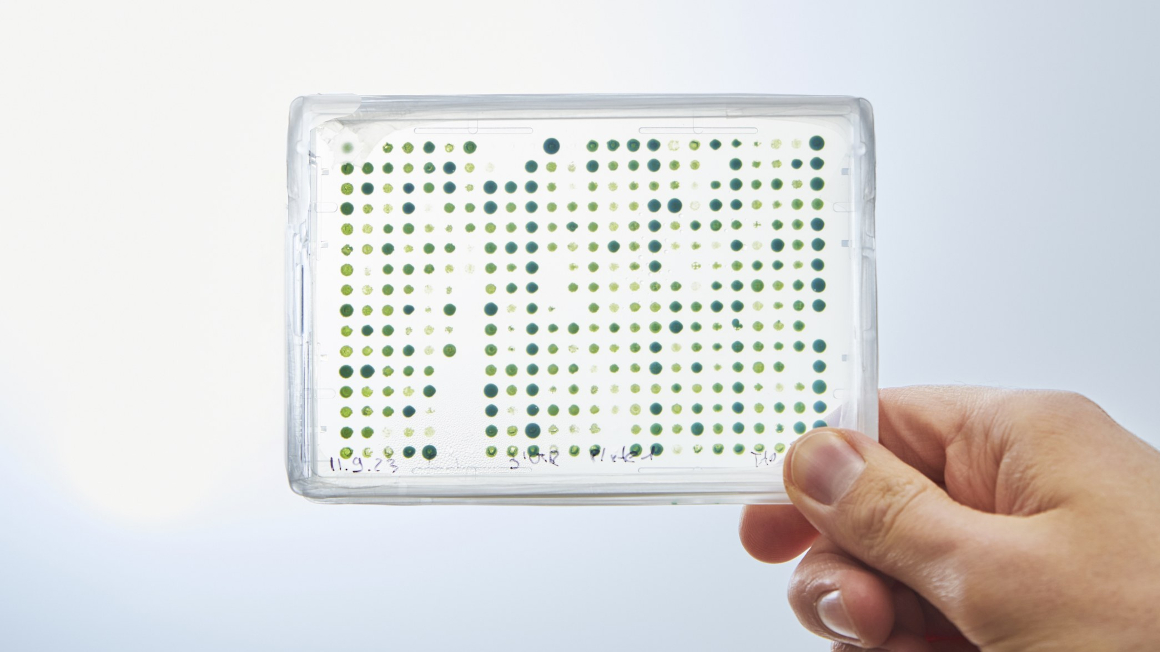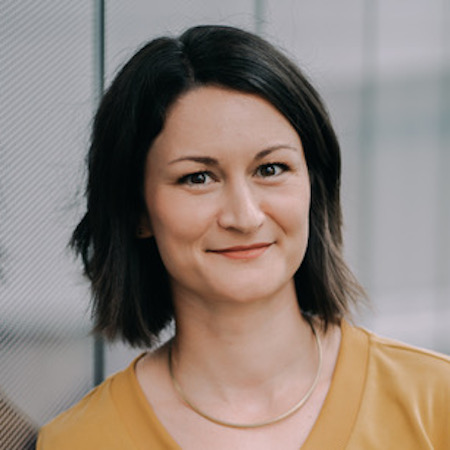"Microalgae on building facades can green the city"
Linus StegbauerProfession:
Chemist and material scientist
Position: Head of Chemistry of Bio-Inspired Structural Materials at the Institute of Interfacial Process Engineering and Plasma Technology (IGVP) at the University of Stuttgart

Profession:
Chemist and material scientist
Position: Head of Chemistry of Bio-Inspired Structural Materials at the Institute of Interfacial Process Engineering and Plasma Technology (IGVP) at the University of Stuttgart

Linus Stegbauer wants to use microalgae to improve the urban climate by developing facade elements for buildings that are coated with a special biofilm of living microalgae.
Microalgae are a beacon of hope for the bioeconomy. Not only manufacturers of food and animal feed rely on them, but microalgae are also becoming increasingly important for the production of biofuel and new plastics. Linus Stegbauer now wants to establish these talented single-celled organisms in the construction sector. To this end, the Stuttgart chemist wants to develop biointelligent facade elements for buildings that are coated with a special biofilm made of microalgae. Stegbauer is convinced that algae-based house walls could not only improve the urban climate, but also ensure a better microclimate in rooms.
What properties make microalgae so interesting for use in the construction sector?
Microalgae make far fewer demands on their environment and their required nutrients than many higher plants. Thus, microalgae can survive even in the High Alps and are thus predestined for the harsh conditions on facades. They grow much faster than other plants and can thrive again even after complete desiccation.
Biofilms are generally undesirable - also on house facades. What exactly is a biofilm made of microalgae and in what form should it be used?
We would like to create an artificial biofilm for the microalgae, like a nutrient medium, that allows water to be stored, nutrient exchange to occur, and algae growth to be locally limited so that we can control growth. It should be translucent so that the microalgae can grow by photosynthesis.
What functions should the microalgae serve in the biofilm?
The ability of the algae to absorb and utilize carbon dioxide or pollutants such as nitrogen oxides from the air speaks for their use in building facades. Water is also retained by the algae and, together with the shading provided by greenery, can provide local cooling or even insulation in the often hot and dry urban climate.
What bioeconomic potential does the technology offer the construction sector in addition to its protective function?
Nitrogen oxide and pollutant levels in urban air have been a health hazard for years. Microalgae on facades could help as they "green" previously unused space in the city. Likewise, costs could be saved on air conditioning and heating, as the algae would take over some of that.
There are a variety of algae available: Are you looking at any particular candidates yet?
I would like to focus on unicellular algae, also called microalgae. There are several thousand species, and we have targeted in particular those that are robust and can also dry out from time to time, so that they could withstand the harsh life on the facade.
What challenges do you see in the development of the microalgae-based biofilm?
The biggest challenge at the moment is developing the culture medium to withstand the harsh conditions on the facade. Natural biofilms often contain a lot of components and we therefore also rely on a combination of several biopolymers.
What is the current development status?
Previous work on artificial biofilms has mostly dealt exclusively with bacteria, so we have a lot of groundwork to build. At the moment, we are researching which combination of culture medium and microalgae is particularly suitable. To do this, we are testing the growth of various microalgae on different culture media to find the optimal conditions.
Interview: Beatrix Boldt


